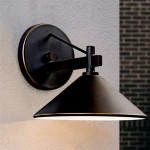How To Install an Outdoor Lighting Transformer
Outdoor lighting significantly enhances the aesthetic appeal and security of any property. A critical component of most low-voltage outdoor lighting systems is the transformer. The transformer converts standard household voltage (typically 120V) to a lower, safer voltage (commonly 12V or 15V) suitable for outdoor lighting fixtures. Proper installation of an outdoor lighting transformer is paramount for optimal performance, safety, and longevity of the lighting system. This article provides a comprehensive guide on how to install an outdoor lighting transformer effectively and safely.
Planning and Preparation
Before commencing the installation process, thorough planning and preparation are essential. This involves assessing the lighting requirements, selecting the appropriate transformer, and gathering the necessary tools and materials. Neglecting this foundational stage can lead to complications and potential hazards during the installation process.
1. Assessing Lighting Requirements: Determining the total wattage required for the outdoor lighting system is the first step. This involves adding up the wattage of all the light fixtures that will be connected to the transformer. The transformer must have a wattage rating that exceeds the total wattage of the lights to prevent overloading. It is generally recommended to select a transformer with a wattage rating that is at least 20% higher than the total wattage of the lights to provide a safety margin and accommodate future expansion.
For example, if the outdoor lighting system consists of ten 5-watt lights and five 7-watt lights, the total wattage would be: (10 x 5) + (5 x 7) = 50 + 35 = 85 watts. In this case, a transformer with a wattage rating of at least 100 watts would be advisable.
2. Selecting the Appropriate Transformer: Outdoor lighting transformers are available in various wattage ratings, voltage outputs, and enclosure types. Selecting the right transformer depends on the specific needs of the lighting system and the environmental conditions. Consider factors such as:
- Wattage Rating: As mentioned previously, the transformer's wattage rating must be adequate to support the total wattage of the connected lights.
- Voltage Output: Most low-voltage outdoor lighting systems operate at 12V or 15V. Ensure the transformer's voltage output matches the voltage requirements of the light fixtures.
- Enclosure Type: Outdoor transformers are typically housed in weatherproof enclosures to protect them from the elements. Choose an enclosure that is appropriate for the intended installation location. Options include metal enclosures with hinged doors and lockable latches, and sometimes plastic weatherproof enclosures. The National Electrical Manufacturers Association (NEMA) ratings help determine the level of protection the enclosure offers.
- Timer and Photo Sensor: Some transformers come equipped with built-in timers and photo sensors, which automatically turn the lights on and off based on a preset schedule or ambient light levels. These features can enhance convenience and energy efficiency.
3. Gathering Tools and Materials: Having all the necessary tools and materials readily available will streamline the installation process. The following is a typical list of essential items:
- Outdoor lighting transformer
- Screwdriver (Phillips and flathead)
- Wire stripper
- Wire connectors (waterproof connectors are recommended)
- Voltage tester (multimeter)
- Pliers
- Drill (if mounting the transformer)
- Mounting hardware (screws, anchors, etc.)
- Conduit (if required by local codes)
- Grounding wire
- Safety glasses
- Gloves
4. Checking Local Codes and Regulations: Before starting any electrical work, it is crucial to check local building codes and regulations. Some jurisdictions may have specific requirements for outdoor lighting installations, including the type of wiring permitted, the location of the transformer, and the need for permits. Failure to comply with local codes can result in fines or other penalties.
Installing the Transformer
The installation process involves selecting a suitable location, mounting the transformer, connecting the wiring, and testing the system. Each step must be performed carefully and meticulously to ensure a safe and reliable installation.
1. Selecting a Suitable Location: The location of the transformer should be carefully considered to ensure accessibility, safety, and protection from the elements. The following factors should be taken into account:
- Proximity to Power Source: The transformer should be located near a GFCI-protected 120V outdoor electrical outlet. This will minimize the length of the high-voltage wiring.
- Weather Protection: The transformer should be installed in a location that is sheltered from direct rain, snow, and sunlight. While most transformers are housed in weatherproof enclosures, prolonged exposure to the elements can still reduce their lifespan.
- Accessibility: The transformer should be easily accessible for maintenance and repairs. Avoid installing it in hard-to-reach areas, such as behind bushes or shrubs.
- Security: The transformer should be installed in a location that is not easily accessible to children or pets. Tampering with the transformer can be dangerous.
- Ventilation: Ensure that the transformer has adequate ventilation to prevent overheating. Do not enclose it in a confined space.
2. Mounting the Transformer: Most outdoor lighting transformers are designed to be mounted on a wall or post. The mounting process typically involves the following steps:
- Marking Mounting Holes: Use the transformer's mounting bracket as a template to mark the locations of the mounting holes on the wall or post.
- Drilling Pilot Holes: Drill pilot holes at the marked locations using a drill bit that is slightly smaller than the diameter of the mounting screws.
- Installing Mounting Hardware: Insert appropriate mounting screws or anchors into the pilot holes and securely attach the transformer to the wall or post. Ensure the transformer is level and stable.
3. Wiring the Transformer: Connecting the wiring correctly is crucial for the proper functioning and safety of the outdoor lighting system. The wiring process typically involves the following steps:
- Disconnecting Power: Before starting any electrical work, disconnect the power to the circuit at the main electrical panel. This will prevent electric shock. Verify that the power is off using a voltage tester.
- Connecting the Input Wiring (120V): Connect the black (hot) wire and the white (neutral) wire from the GFCI outlet to the corresponding terminals on the transformer. Connect the green (ground) wire from the outlet to the grounding terminal on the transformer. Use wire connectors to ensure secure and weatherproof connections.
- Connecting the Output Wiring (Low Voltage): Connect the low-voltage wires from the lighting fixtures to the output terminals on the transformer. Most transformers have multiple output terminals to accommodate different wiring configurations. Follow the manufacturer's instructions for connecting the low-voltage wires. Make sure to use waterproof wire connectors to protect the connections from moisture.
- Burying Low-Voltage Cables: It's often recommended to bury low-voltage cables a few inches underground to protect them from damage due to foot traffic or lawn care equipment. Check local codes for specific requirements.
4. Grounding the Transformer: Ensure the transformer is properly grounded to prevent electrical hazards. Connect a grounding wire from the transformer's grounding terminal to a ground rod or other approved grounding point. This will provide a path for fault current to safely return to the ground.
Testing and Troubleshooting
After completing the wiring, testing the system is essential to ensure that it is functioning correctly and safely. If any problems are detected, troubleshooting steps should be taken to identify and resolve the issue.
1. Checking Voltage: Use a voltage tester to check the voltage at the output terminals of the transformer. The voltage should be within the specified range (typically 12V or 15V). If the voltage is too high or too low, there may be an issue with the transformer or the wiring.
2. Verifying Lighting Operation: Turn on the power to the circuit and verify that all the lights are working properly. Check for flickering lights, dim lights, or lights that do not turn on at all. These issues can indicate problems with the wiring, the transformer, or the light fixtures themselves.
3. Troubleshooting Common Problems: If any problems are detected, the following troubleshooting steps can be taken:
- Check Wiring Connections: Ensure that all wiring connections are secure and properly insulated. Loose or corroded connections can cause voltage drops and other issues.
- Inspect Light Fixtures: Check the light fixtures for any signs of damage or corrosion. Replace any damaged or corroded fixtures.
- Test Transformer: If the transformer is suspected of being faulty, it can be tested using a multimeter. Follow the manufacturer's instructions for testing the transformer.
- Circuit Breaker: Check the circuit breaker. If the circuit breaker trips frequently, this could indicate an overload or a short circuit.
4. Addressing Voltage Drop: Voltage drop can be a common issue in low-voltage lighting systems, particularly over long distances. Voltage drop occurs when the voltage decreases as it travels along the wire. This can cause lights to appear dim or not work at all. The following steps can be taken to address voltage drop:
- Use Heavier Gauge Wire: Using a heavier gauge wire can reduce voltage drop. Heavier gauge wires have lower resistance, which allows more current to flow with less voltage loss.
- Reduce Wire Length: Minimizing the length of the wire can also reduce voltage drop. Place the transformer closer to the lights, or use multiple transformers to distribute the load.
- Utilize Multiple Output Terminals: Some transformers have multiple output terminals. Distributing the lighting load across multiple terminals can help to reduce voltage drop.
5. Ensuring Proper Wire Connections: Use only waterproof wire connectors specifically designed for outdoor use. These connectors provide a secure and weatherproof seal, preventing corrosion and ensuring reliable performance. Avoid using twist-on wire connectors (wire nuts) that are not specifically designed for outdoor use, as they can be susceptible to moisture and corrosion.
By following these steps and taking appropriate safety precautions, installing an outdoor lighting transformer can be a straightforward and rewarding project that enhances the beauty and functionality of your property.

The Easiest Way To Install Low Voltage Landscape Lighting Abby Organizes

How To Install Low Voltage Outdoor Landscape Lighting The Garden Glove

Wiring Installation Coastal Source

How To Wire Outdoor Low Voltage Lighting Part 3

Landscape Lighting Replace A Transformer

Installing A Transformer For Low Voltage Landscape Lighting

How To Easily Install Landscape Lighting With No Tools

How To Wire Outdoor Low Voltage Lighting Part 2

The Easiest Way To Install Low Voltage Landscape Lighting Abby Organizes

How To Install A Transformer For Low Voltage Outdoor Lighting







